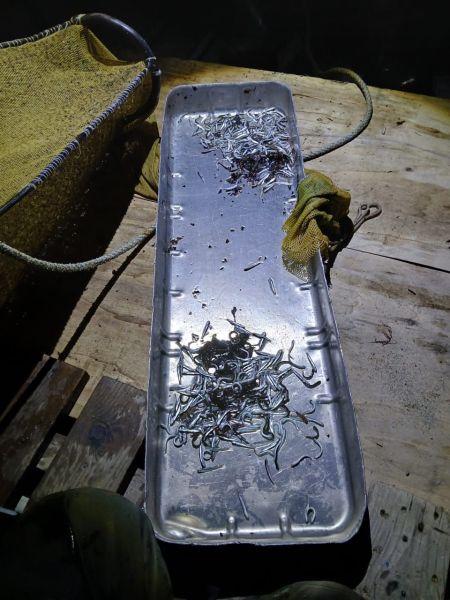Kamchatka scientists conducted surveys of young Pacific salmon

Scientists conducted surveys of young Pacific salmon on five rivers of the western coast of Kamchatka: Ozernaya, Bolshaya, Pymta, Utka, Kolpakova and on two rivers of the eastern coast: Kichiga, Khailulya, Kamchatka.Today reports with reference to the Kamchatka branch of the All-Russian Scientific Research Institute of Fisheries and Oceanography (KamchatNIRO).
Accounting for the number of sloping juveniles (migrating from spawning rivers to feed in the sea) is the first and one of the key stages of the annual monitoring of the state of Pacific salmon stocks. In spring and early summer, the specialists of KamchatNIRO carry out fry-accounting work on the reference rivers of the eastern and western coasts of Kamchatka.
The main object of the surveys is the young pink salmon, a key object of salmon fishing in the region. The forecast of the projected pink salmon catch is based on the dependence of the number of offspring on the number of parents. Therefore, the wide coverage of various areas of reproduction by fry accounting works makes it possible to obtain high-quality data on the number of juveniles migrating to the sea and make the first approximate estimates of the value of the return for the next year.
The first results of the juvenile accounting work show a relatively low number of pink salmon predators from parent spawning in 2024. In the Pymta (in the west) and Khailulya (in the east) rivers, the number of fingerlings is approaching the average annual (for odd years) values. In the rest of the rivers studied, the number of rolling juveniles is lower than in previous years. Accounting work will continue at least until the third decade of June, and only based on the final values will it be possible to estimate the number of pink salmon predators in 2025.
In addition to pink salmon, the rivers Kichiga and Khailulya account for sloping juvenile chum salmon. The possibility of one-time accounting of juvenile chum salmon and pink salmon is due to the peculiarities of the biology of these species: both species leave the spawning rivers as fingerlings (in the first year of life), their migration behavior is similar and the timing of migration coincides. Monitoring of the sloping migration of this species has begun relatively recently, and long time series have not yet been accumulated, but the foundation has already been laid for long-term observations that will improve the quality of fishing forecasts.
Juvenile sockeye salmon are counted in the Ozernaya River, in the basin of which the largest Asian herd of this species reproduces. Sockeye salmon, unlike pink salmon and chum salmon, migrate to the sea mainly in the second and subsequent years of life. The migration of smolts (individuals ready to change their habitat) begins in early June. The beginning of the descent of juvenile sockeye salmon was recorded on June 3, as of the current date, the number of skaters continues to increase.
Photo “KamchatNIRO”